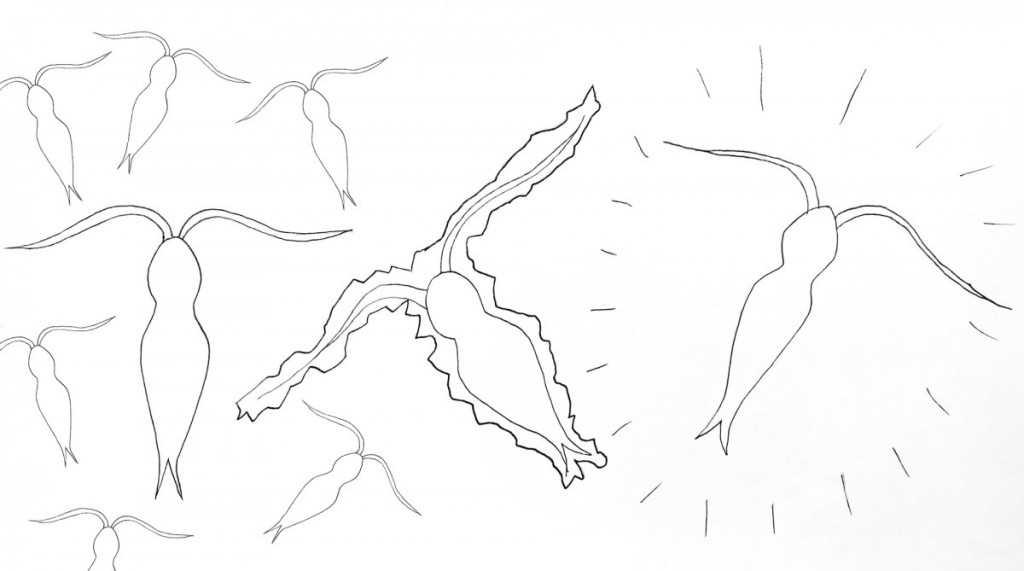Acartia tonsa
Common name: Copepod
By A. Gaul
Organism
This microscopic organism commonly referred to as a copepod don’t get any bigger then 2mm and can usually be seen with the naked eye.
Taxonomic Group Characteristics
They are apart of the order Calanoida, who is apart of the subclass Copepoda. This species is a relative of the crayfish and water flea (FCPS).
Class Maxillopoda
Subclass Copepoda
Infraclass Neocopepoda
Superorder Gymnoplea
Order Calanoida
Family Acartiidae
Genus Acartia
Species Acartia tonsa
life cycle and movement study of a copepod
Where do they live?
This subclass can be found in a large variety of environments from estuaries to the deep sea (NOAA 2014). However, this species of copepods were originally found in an estuary.
Ecological info about role in environment / relationships with other organisms
With such a large range of potential habitats, the Acartia tonsa are able to grow into large populations and provide other species with a large food source. The subclass Copepoda are so will distributed and are able to reach large populations that they have become a keystone species that is prayed on by a large portion of other aquatic organisms like amphibians and small fish like the juvenile herring. It was found that even the slow moving sea horse will take a bite out of these guys (Morgan 2013).
Represent symbolically for 21st century humans
While copepods are a keystone species that other organisms depend on, just this knowledge alone may not be significant enough for some people to care about this appealing looking zooplankton. For those people it may be more beneficial to see how is species relates to humans. One of the things that this subclass does is that they live in large quantities, just like a human city. There has been more than 1,000 copepods in a liter of water recorded (Macrocyclop). They also are able to withstand temperature changes. When the temperature gets too low the copepods will slow down and rest till the temperature gets higher. They are able to tough out harsh conditions and continue to prosper. The main lesson people can get from this incredibly prosperous subclass is that hunker down when times get tough and are able to survive another day.

Cited Sources
Kiørboe, T. (1985, November 26). Bioenergetic of the planctonic copepod Acartia tonsa. Relation between feeding, egg production and respiration, and composition of specific dynamic action [Electronic version]. Marine Ecology Progress Series, 26, 85-97. doi:10.3354/meps026085
Tiselius, P. (1992). Behavior of Acartia tonsa in patchy food environments [Electronic version]. American Society of Limnology and Oceanography, 37(8), 1640-1651.
Macrocyclops albidus. (n.d.). In Copepod. Retrieved from http://www.fcps.edu/islandcreekes/ecology/copepod.htm
Morgan, J. (2013, November 26). Seahorses stalk their prey by stealth. In BBC News. Retrieved from http://www.bbc.com/news/science-environment-25103455
NOAA. (2014). About COPEPOD (The COPEPOD Project) . In The COPEPOD Project. Retrieved from http://www.st.nmfs.noaa.gov/copepod/about/index.html









